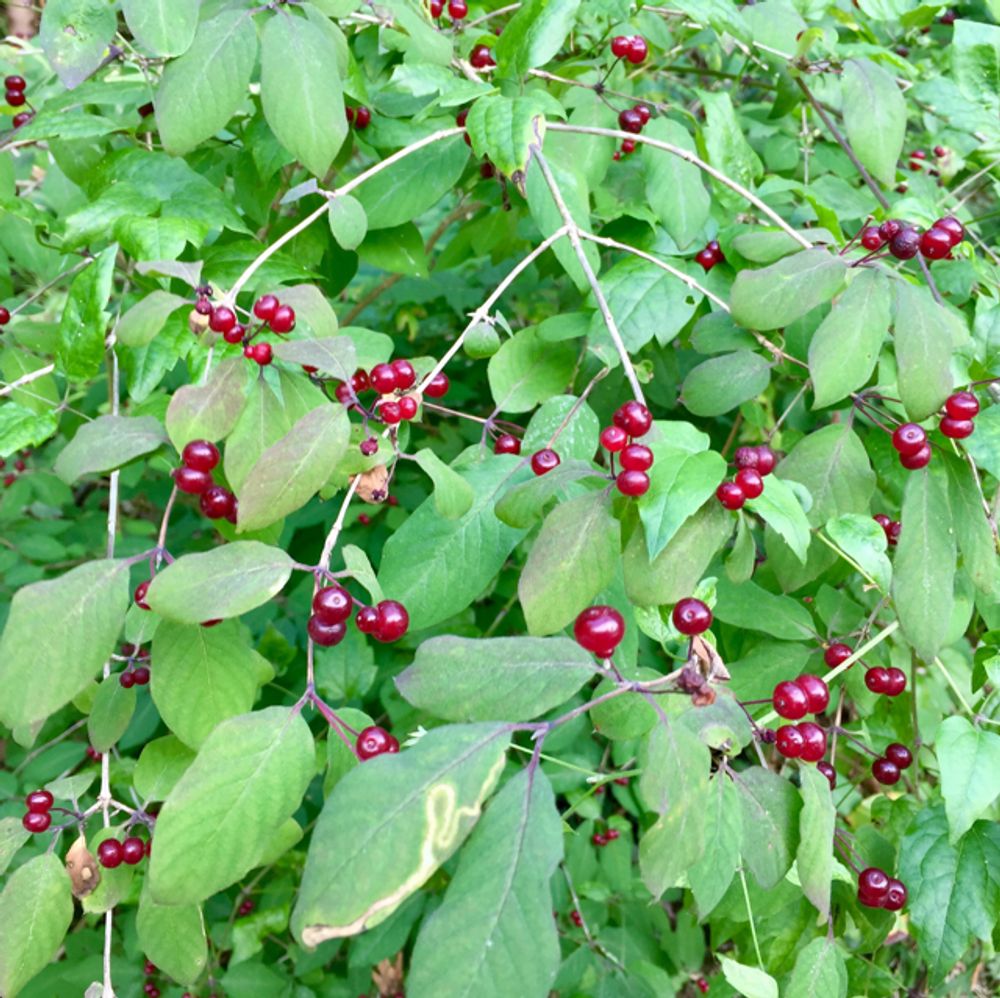Alder buckthorn
(Frangula alnus alnus)

Description
Frangula alnus, commonly known as the Alder Buckthorn or Glossy Buckthorn, is a species of shrub or small tree belonging to the family Rhamnaceae. It is native to Europe, western Asia, and northern Africa, but has also been introduced to North America as an ornamental plant. In this article, we will explore the characteristics, habitat, uses, and cultivation of Frangula alnus. Description Frangula alnus, commonly known as Alder Buckthorn or Glossy Buckthorn, is a deciduous shrub or small tree that can grow up to 20 feet tall. It has an upright growth habit and a narrow crown. The bark of the tree is smooth, grayish-brown in color, and develops shallow fissures as it ages. The leaves of Frangula alnus are alternate, oval-shaped, and have a glossy dark green color on the upper surface and a lighter shade of green on the underside. The leaves are also serrated and can grow up to 3 inches long. The flowers of Frangula alnus are small, greenish-white, and arranged in clusters at the base of the leaves. They bloom in late spring or early summer. The fruit of Frangula alnus is a small, round, black berry that matures in the fall and persists on the plant through the winter. Overall, Frangula alnus has a neat, tidy appearance with glossy leaves and small black berries that add ornamental value to the plant. Habitat Frangula alnus is a widespread shrub or small tree species that is native to Europe, western Asia, and northern Africa. Its natural range includes countries such as France, Spain, Italy, Germany, Poland, Romania, Ukraine, Russia, Turkey, Iran, and Morocco, among others. Within its native range, Frangula alnus is commonly found in moist habitats such as riverbanks, wetlands, and forests. It is also known to thrive in calcareous soils, and it can tolerate both sun and partial shade. Frangula alnus is considered a hardy species that can survive in a variety of soil types and environmental conditions. Frangula alnus has also been introduced to other parts of the world, including North America, where it has become naturalized in some regions. In North America, it is commonly found in gardens, parks, and along roadsides. However, it is important to note that Frangula alnus is considered an invasive species in some areas, as it can outcompete native plants and alter the structure of natural ecosystems. Uses Frangula alnus has a variety of uses, including medicinal, dyeing, and ornamental purposes. Medicinal Uses: The bark of Frangula alnus contains anthraquinone glycosides, which have laxative properties. As a result, it has been used for centuries as a natural remedy for constipation, hemorrhoids, and other digestive disorders. It is also known to have anti-inflammatory and antibacterial properties, and has been used in traditional medicine to treat skin diseases, fevers, and rheumatism. Dyeing Uses: The bark of Frangula alnus has long been used for dyeing fabrics. When boiled, the bark produces a yellow dye that was traditionally used to color wool and silk. The dye is also used in the production of ink. Ornamental Uses: Frangula alnus is often used as an ornamental plant due to its glossy leaves and small, black berries. It is commonly used in gardens and landscaping, and is known for its neat, tidy appearance. In addition, it is a hardy plant that can thrive in a variety of soil types and environmental conditions. Other Uses: Frangula alnus has also been used for other purposes, such as for making charcoal and as a source of firewood. The plant has also been used in traditional folk medicine as a remedy for toothache and as a purgative. It is important to note that while Frangula alnus has been used for medicinal and other purposes for centuries, its use should be approached with caution and under the guidance of a healthcare professional. The plant contains potentially harmful compounds, and its use may have adverse effects on some individuals. Cultivation Frangula alnus is a hardy plant that is easy to cultivate. It prefers moist, well-drained soil and full sun to partial shade. The plant can be propagated from seed or cuttings, and it grows quickly, reaching maturity in just a few years. When planting Frangula alnus, it is important to provide adequate space for the plant to grow. It can reach a height of up to 20 feet and a spread of up to 15 feet, so it should be planted in an area with plenty of room to accommodate its size. In terms of maintenance, Frangula alnus requires little care. It should be watered regularly during its first few years of growth, but once established, it can tolerate periods of drought. Pruning can be done in the early spring to remove dead or damaged branches. Conclusion Frangula alnus is a hardy, versatile plant that has a variety of uses. Its medicinal properties, dyeing capabilities, and ornamental value make it a popular choice for gardeners and landscapers alike. With proper cultivation and maintenance, Frangula alnus can thrive in a variety of habitats and provide a beautiful addition to any landscape.
Taxonomic tree:







